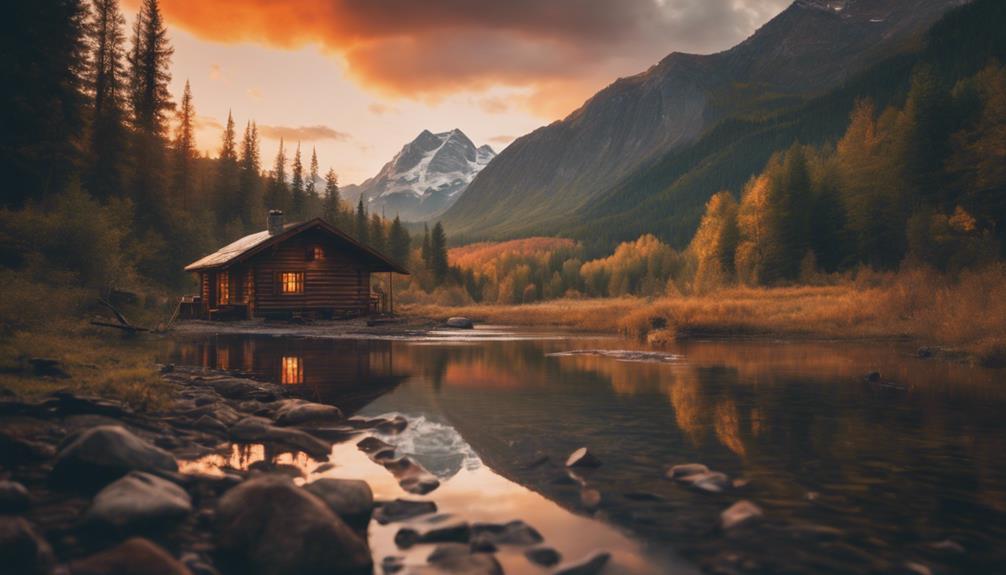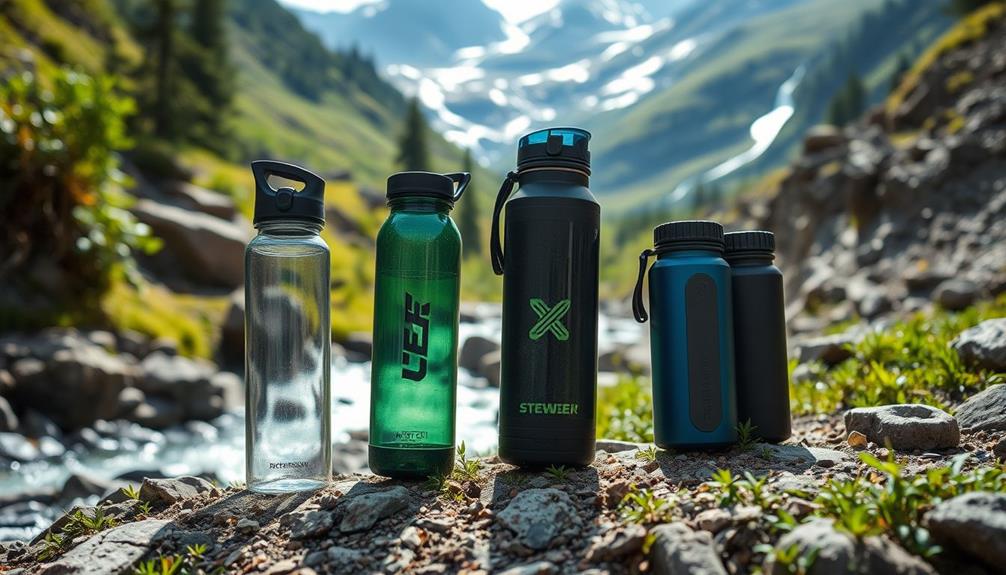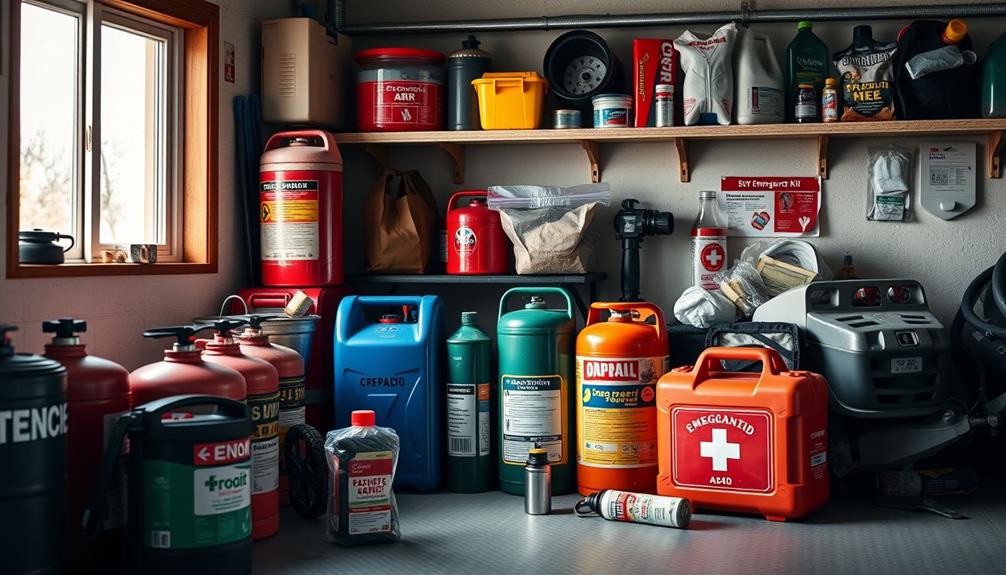If you're searching for the top U.S. states ideal for survivalists, focus on those with low population density, like Wyoming, Vermont, or Montana. These states boast affordable land, stable climates, and strong community support systems. Confirm you're at least 60 miles from urban centers, where chaos can reign during crises. Additionally, pay attention to crime rates, taxes, and government regulations that affect self-sufficiency. Favorable weather patterns are vital for resource sustainability, too. Embracing these considerations can pave your way to a prepared and resilient lifestyle in uncertain times. There's much more to explore on this journey. Researching and visiting potential properties in these states will help you find the ideal survival retreat for your needs. Look for areas with access to clean water sources, fertile soil for gardening, and opportunities for hunting and foraging. Take advantage of local workshops and resources to hone your survival skills and connect with like-minded individuals in the community who can offer support and knowledge. Remember, preparation is key to thriving in any situation.
Key Takeaways
- States like Montana and Arkansas offer affordable land prices and sustainable resources essential for survivalist living.
- Low population density in states such as Wyoming and Vermont reduces chaos risks during societal collapse.
- Favorable climates in Tennessee and Texas support year-round crop viability and resource availability for self-sufficiency.
- Low crime rates and supportive community networks in Idaho enhance safety and resilience during crises.
Population Density Considerations
When choosing a survivalist state, consider the impact of population density on your safety and preparedness during a societal collapse. High population density can greatly increase your risk, especially if you find yourself in or near urban areas.
During disasters, cities often experience mass migrations, which can lead to chaos and heightened danger. Ideally, you should look for locations at least 60 miles away from major urban centers to enhance your safety.
Additionally, be aware that proximity to interstates may exacerbate vulnerability due to increased traffic and congestion. Evaluate the nearest major city and its potential impact on your privacy, security, and access to resources, ensuring you're not caught in a densely populated area when disaster strikes.
Real Estate and Land Prices
Affordable land might seem appealing, but it often compromises quality and essential resources for survival. When scouting for land, prioritize areas that offer sustainable resources like water and fertile soil. Research recent sales data to avoid costly mistakes and guarantee your investment meets your survival needs. Here's a quick overview of average land prices across different states:
| State | Average Price per Acre | Resource Availability |
|---|---|---|
| Montana | $1,200 | High |
| Arkansas | $1,900 | Moderate |
| Tennessee | $2,500 | High |
| Texas | $3,200 | Moderate |
| Maine | $1,800 | High |
Bargain hunting can lead to poor decisions, so always assess land quality before purchasing.
Climate and Weather Factors

Understanding climate and weather factors is essential for selecting a location that supports sustainable agriculture and minimizes disaster risks. You'll want to take into account:
- Rainfall Patterns: Look for regions with balanced rainfall to avoid flooding and drought.
- Temperature Extremes: Assess average temperatures, as extremes can impact crop viability.
- Seasonal Changes: Evaluate seasonal weather patterns, which influence growing seasons and shelter needs.
- Historical Data: Research past weather events to identify risks like hurricanes or tornadoes.
Choosing a location with favorable climate conditions enhances your chances of thriving in uncertain times.
Prioritize areas with adequate water supply and resilient agricultural potential to guarantee your survivalist goals are met.
Crime Rate Analysis
Analyzing crime rates in potential survivalist states is essential for ensuring your safety and stability during times of crisis. High crime rates can escalate in chaotic situations, so it's vital to evaluate local crime trends. Additionally, proximity to correctional facilities can increase risks from released inmates. Here's a quick look at crime rates in some survivalist-friendly states:
| State | Crime Rate per 1000 Residents |
|---|---|
| Wyoming | 2.5 |
| Vermont | 1.9 |
| Idaho | 3.0 |
Choosing areas with lower crime rates not only enhances your safety but also contributes to a more stable environment for your survival preparations. Stay informed and prioritize security in your planning.
Taxes and Living Costs

Taking into account taxes and living costs is essential for ensuring long-term sustainability in your survival plans. You want to choose a state that minimizes financial burdens, allowing you to focus on preparedness.
Here are some key factors to evaluate:
- Income Tax Rates: Look for states with low or no income tax to keep more money in your pocket.
- Property Taxes: High property taxes can drain your resources; lower rates can enhance your financial stability.
- Cost of Living: Research average living costs to avoid areas where essential resources may become unaffordable.
- Economic Health: States with stable economies often have favorable tax policies and greater availability of resources for preppers.
Government Regulations Impact
Government regulations can greatly impact your ability to live off-grid and pursue self-reliance in your chosen state. States with strict zoning laws and building permits can hinder your plans for self-sufficient living.
To thrive, look for areas with minimal regulations that allow you to collect rainwater, build alternative structures, and grow your own food without excessive oversight. Understanding local laws is essential; some states may impose restrictions that limit your freedom.
Prioritize locations where government intrusion is low, enabling you to develop a self-reliant lifestyle. Researching these regulations before making a move can save you time, money, and frustration, ensuring you choose a state that aligns with your survivalist goals.
Disaster Risk Assessment

Evaluating disaster risks in your chosen state is essential for ensuring your safety and preparedness in the face of potential threats. Here are four key factors to take into account:
- Natural Hazards: Research the frequency of natural disasters like hurricanes, floods, or earthquakes in the area.
- Man-Made Risks: Identify nearby industrial sites, such as chemical plants or nuclear facilities, that could pose risks.
- Infrastructure Resilience: Assess the state's infrastructure, including roads and emergency services, to determine how well they can handle disasters.
- Climate Stability: Look into climate patterns and historical weather events to understand long-term risks to food and water supplies.
Community Support Systems
Community support systems play an essential role in enhancing resilience and preparedness during crises, building on the insights gained from evaluating disaster risks in your area.
Strong relationships with neighbors can greatly boost your survival strategies. When you're part of a community that shares skills like hunting, foraging, and gardening, you create a network of mutual aid.
Look for areas where cultural alignment fosters collaboration; this makes it easier to exchange knowledge and resources. Additionally, consider local prepper groups or organizations that focus on training and support.
Frequently Asked Questions
How Do Local Wildlife Populations Impact Survivalist Strategies?
Local wildlife populations greatly impact your survival strategies. You'll rely on them for food, assess their behaviors for safety, and learn to coexist, ensuring you're prepared for potential threats and opportunities in your environment.
What Are the Best Renewable Energy Options for Off-Grid Living?
Think of renewable energy as a lifeline in a wild sea. For off-grid living, solar panels, wind turbines, and hydropower are your best bets. They harness nature's gifts, ensuring you thrive independently and sustainably.
How Can Survivalists Build Community Resilience Post-Collapse?
To build community resilience post-collapse, you should foster strong relationships, share skills, and collaborate on resources. Engage neighbors in preparedness activities, create local networks, and prioritize self-sufficiency to enhance collective strength and adaptability.
What Skills Should Survivalists Prioritize for Self-Sufficiency?
Isn't self-sufficiency the ultimate freedom? You should prioritize skills like gardening, food preservation, and basic carpentry. Mastering first aid and hunting can also empower you, ensuring your survival and resilience in challenging times.
How Can Survivalists Effectively Barter in a Crisis?
To effectively barter in a crisis, you should stock essential goods, develop strong relationships, understand value, and be flexible. Always communicate clearly and prioritize mutual benefit to guarantee successful exchanges during tough times.
Conclusion
In uncertain times, finding the right state for your survivalist journey is like searching for a needle in a haystack.
By considering population density, land prices, and community support, you can uncover the perfect spot to thrive.
Remember, 'When the going gets tough, the tough get going.'
With the right resources and a solid plan, you can cultivate a life of self-reliance and security, ensuring you're prepared for whatever challenges lie ahead.










